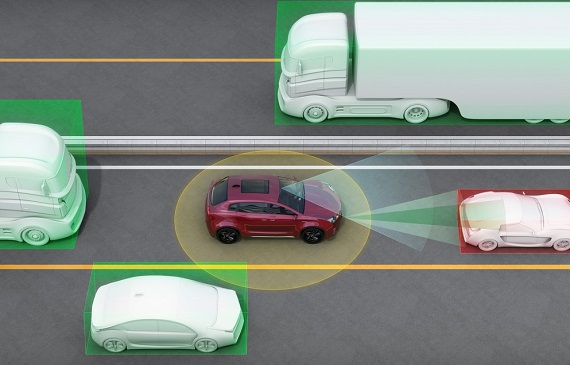Whatever you call them – robot cars, driverless cars, autonomous vehicles, self-driving cars – they are definitely in your future. But the question is, how far in your future?
They’re being tested already – more than 1,400 self-driving vehicles are operating in 36 states right now. Most states, but not all, require a backup driver.
Take an interactive urban trip as the backup driver in the Washington Post’s autonomous (self-driving) car simulation. It offers an interesting perspective on the strengths and weaknesses in the way these cars work and how they interact with the environment around them. The Post invites you to sit in the passenger seat and play the role as the backup driver. And that’s an important role because the cars may miss some hazards and they can’t operate in certain weather conditions that interfere with their sensors, causing them to pull over suddenly and shut down entirely.
This interactive feature is a fun way to learn more about how the cars work and their limitations. You can learn more about some of the system’s weaknesses in article in Insurance Journal by Alan Levin and Ryan Beene: Automated Driver Assist Cars Still a Work in Progress:
The radars and cameras used to sense obstructions ahead each have their limitations and computer software that evaluates the data is still a work in progress, according to the experts and advocates. In many cases, they are better at tracking moving vehicles ahead than recognizing parked ones.
But there are definite pluses, too:
To be sure, automated driving systems have clear potential to improve traffic safety by supplementing the driver. Automatic emergency braking alone has been found by IIHS to reduce rates of rear-end crashes by half, and the insurer-funded group estimates that the system could reduce police-reported crashes of all types by 20%.
Many autonomous or self-driving features are already making their way into our new cars now. These are generally referred to as advanced driver assistance systems. See 7 Self-Driving Car Features You Can Buy Now (and Some You May Already Have) from Autotrader. And cars.com breaks down self-driving features by car make.
But event these new tech features have a ways to go before they are up to par and winning driver acceptance. A recent survey by JD Power showed that many driver-assist features are seen as annoyances;
J.D. Power’s 2019 U.S. Tech Experience Index Study, published today, surveyed more than 20,000 consumers earlier this year, most of whom purchased or leased a model-year 2019 vehicle during the previous 90 days. Nearly a quarter of the group found alerts “annoying or bothersome” from systems that mitigate lane departure or actively center the vehicle, the study said. Such alerts range from hands-on-the-wheel warnings to lane departure chimes. For those who find them annoying, more than half said they sometimes disable the systems; among those who weren’t annoyed, only one-fifth or so indicated the same.
Some of the complaints can be chalked up to drivers being unfamiliar with the technology and uncertain about how it operates, so presumably we’ll all get more comfortable with things as we grow familiar with them.
So it’s not likely you’ll be able to read the latest best sellers while lounging in the back seat of your robot car on your upcoming commutes. But on the other hand, sophisticated technologies are leading to safer cars and fewer accidents – a big win for us all!
Reprinted from Renaissance Alliance – no usage without permission.


